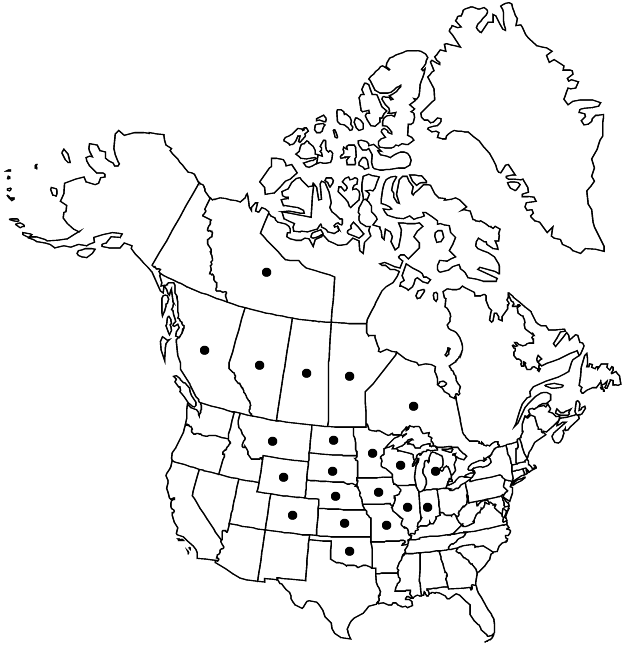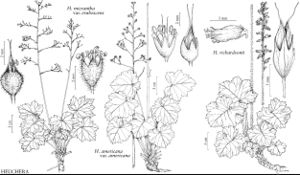Difference between revisions of "Heuchera richardsonii"
in J. Franklin et al., Narr. Journey Polar Sea, 766, plate 29. 1823,.
FNA>Volume Importer |
FNA>Volume Importer |
||
| Line 58: | Line 58: | ||
|publication year= | |publication year= | ||
|special status= | |special status= | ||
| − | |source xml=https://jpend@bitbucket.org/aafc-mbb/fna-data-curation.git/src/ | + | |source xml=https://jpend@bitbucket.org/aafc-mbb/fna-data-curation.git/src/f6b125a955440c0872999024f038d74684f65921/coarse_grained_fna_xml/V8/V8_187.xml |
|genus=Heuchera | |genus=Heuchera | ||
|species=Heuchera richardsonii | |species=Heuchera richardsonii | ||
Revision as of 20:28, 24 September 2019
Herbs acaulescent; caudex branched. Flowering stems (7–)20–95 cm, densely long stipitate-glandular. Leaves: petiole densely or sparsely long or short stipitate-glandular; blade broadly ovate or cordate, deeply 5–7-lobed, 2.5–10 cm, base cordate or nearly truncate, lobes rounded, margins dentate, apex acute, surfaces long stipitate-glandular abaxially, glabrous or long stipitate-glandular adaxially. Inflorescences dense to diffuse. Flowers: hypanthium strongly bilaterally symmetric, free 2–7 mm, green, campanulate, abruptly inflated distal to adnation to ovary, 5–14 mm, short stipitate-glandular; sepals erect, green-tipped, equal, 1.3–4.2 mm, apex rounded (sinuses wider than petals); petals erect, green or greenish white, rarely pink, narrowly spatulate, unlobed, 1.3–4 mm, margins finely dentate or coarsely fimbriate; stamens 1.5 mm included to 4 mm exserted; styles from 0.6 mm included to 0.3 mm exserted, 4–6 mm, to 0.1 mm diam. Capsules ovoid, 7–14.5 mm, beaks divergent, not papillose. Seeds dark or very dark brown, ellipsoid, 0.6–0.9 mm. 2n = 14, 28.
Phenology: Flowering May–Jun.
Habitat: Moist or dry, low or upland prairies, basic rock outcroppings and bluffs, sandy, dry woods
Elevation: 200-800 m
Distribution

Alta., B.C., Man., N.W.T., Ont., Sask., Colo., Ill., Ind., Iowa, Kans., Mich., Minn., Mo., Mont., Nebr., N.Dak., Okla., S.Dak., Wis., Wyo.
Discussion
Heuchera richardsonii intergrades with H. americana where their ranges overlap in Arkansas, Illinois, Indiana, Michigan, Missouri, and Oklahoma; the intergrading form is recognized here as H. americana var. hirsuticaulis.
Heuchera hispida (H. americana var. hispida here; see thereunder) was confused with H. richardsonii for almost a hundred years, until C. O. Rosendahl et al. (1933) pointed out that the plants from the Midwest then passing as H. hispida Pursh were distinct from Pursh’s species and were H. richardsonii.
The Blackfoot, Cree, Lakota, and Woodlands Indians used decoctions and infusions of the roots of Heuchera richardsonii for diarrhea and as an eyewash, and the Lakota applied a poultice of powdered roots to sores (D. E. Moerman 1998).
Selected References
None.
